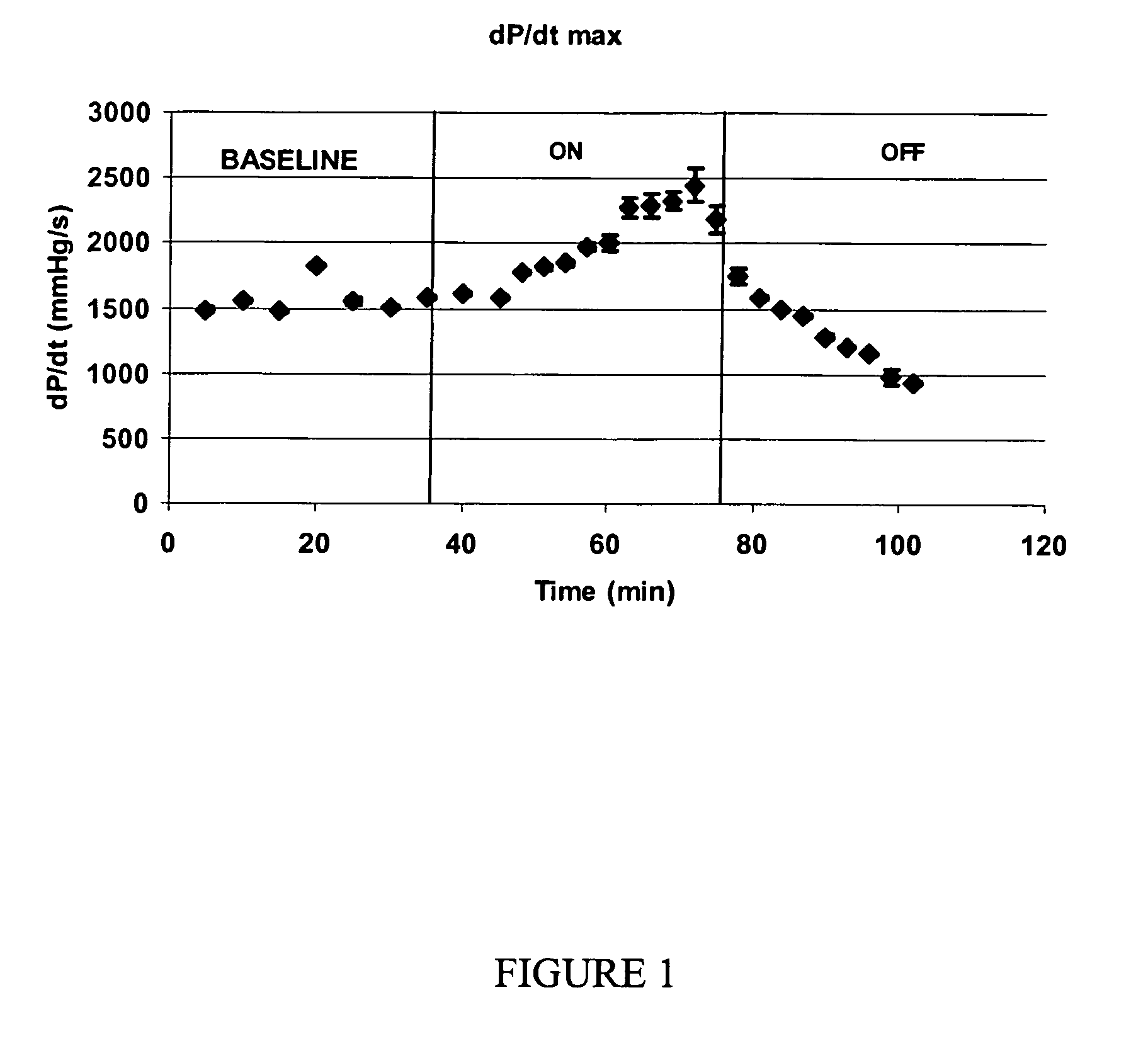Localized delivery of cardiac inotropic agents
a technology of inotropic agents and cardiac surgery, applied in the direction of biocide, drug composition, peptide/protein ingredients, etc., can solve the problems of cardiac surgery performance being a delicate and invasive procedure, affecting the heart function of many patients, and involving significant risks and difficulties, so as to limit the excessive tachycardia
- Summary
- Abstract
- Description
- Claims
- Application Information
AI Technical Summary
Benefits of technology
Problems solved by technology
Method used
Image
Examples
examples
Methods
[0138]Sprague Dawley rats (900 g-1100 g) were anesthetized with an intraperitoneal injection of ketamine and xylazine. The rat was laid on a heating pad and maintained euthermic with warming lights. A 24 gauge intravenous catheter was placed in the tail vein and Ringer's lactate solution (LR) was infused at 10 cc / hr. The trachea was exposed through a vertical incision and cannulated with a 16 gauge blunt cannula that served as an endotracheal tube. The tube was connected to a ventilator for control of ventilation and respiration. The respiratory rate was set to 60 breaths per minute, inspiratory to expiratory time was set to 1:2 and inspiratory flow was 2 liters per minute. A midline sternotomy was performed, the heart exposed and the pericardium resected. The right carotid artery was dissected clean of fascia and care was taken to preserve the adjacent vagus nerve. A polyethelene (PE-50) cannula was inserted via an arteriotomy into the carotid artery and advanced through the...
PUM
| Property | Measurement | Unit |
|---|---|---|
| time | aaaaa | aaaaa |
| weight-average molecular weight | aaaaa | aaaaa |
| molecular weights | aaaaa | aaaaa |
Abstract
Description
Claims
Application Information
 Login to View More
Login to View More - R&D
- Intellectual Property
- Life Sciences
- Materials
- Tech Scout
- Unparalleled Data Quality
- Higher Quality Content
- 60% Fewer Hallucinations
Browse by: Latest US Patents, China's latest patents, Technical Efficacy Thesaurus, Application Domain, Technology Topic, Popular Technical Reports.
© 2025 PatSnap. All rights reserved.Legal|Privacy policy|Modern Slavery Act Transparency Statement|Sitemap|About US| Contact US: help@patsnap.com



